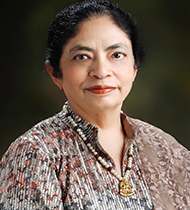
Binoo Joshi
This is a fact that a lot has changed in Jammu and Kashmir since abrogation of Article 370 on August 5/6, 2019 , the constitutional provision that granted special status to the erstwhile state and its natives, especially on two counts – abolition of the symbols of parallel sovereignty within the country , and secondly it has addressed the physical threats posed by terrorism to a large extent . There is an atmosphere of normalcy for the first time since 1989 .
On Tuesday, while intervening the debate on the Jammu and Kashmir Reservation ( Amendment) Bill, 2023 , and Jammu and Kashmir Reorganization ( Amendment) Bill , 2023 , Union Home Minister Amit Shah delivered a very strong message not just to the people in the country, but also all those who had been discussing and debating merits and demerits of the abrogation of Article 370 that “ there could not be two prime ministers, two constitutions, and two flags in one country.”.
This, as interpreted by many , was Home Minister’s response to Trinamool Congress member Saugata Roy, who had called “ Ek Nishan, ek Pradhan , ek vidhaan “ ( one flag, one head of the state and one constitution ) was the political slogan minted by Jan sangha founder Shyama Prasad Mukerjee’s political slogan “ is correct in the immediate context . The TMC member had made these remarks while participating in the debate . But HM’s message’s profoundness needs to be understood in the wider context , as also in the national interest .
Jammu and Kashmir is a sensitive border state which has a history of conflict dated back to 1030s, years before the crunch time came for Maharaja Hari Singh to take a decision – to accede with India or Pakistan , in 1947. The dimensions of the conflict were not only political but also communal , of which Pakistan took advantage in 1947 and continues to do till date . The political ideology of conflict and separate political identity moved in lockstep , the consequences of which have been disastrous for the country , and particularly Kashmir, the beautiful piece of the land of the country.
Amit Shah reflected on the political, geographical reality that there could not be parallel centers of power in the same country , even if those happened to be in a single state . The parallel symbols always conveyed and reinforced a sense that there was something not correct with the system; ( a) wither there was something wrong with the country’s constitution that its application to J&K had to be limited , or ( b) the constitution of India could not guard the interests and rights of the people of J&K ,or ( c) the separate constitution and flags were an acknowledgement that J&K had the special rights to have all this . In short, not only it raised a parallel system , and acceptance of it , but also dilution of the idea of India as such.
Since October 1947, when Maharaja Hari Singh acceded the state to India , to August 5, 2019 , all the generations in Kashmir lived with the deception that Jammu and Kashmir is separate and it was its legitimate right to live in self-defined isolation . The nation was not happy with this idea because it hurt the interests of the nation as J&K was considered an exclusive land where the Indians had to hear the taunt , “ this is not Hindustan “- India .
Amit Shah , by reiterating the sanctity of the abrogation of Article 370 in August 2019 , has brought a generational shift in the thinking of the nation with regard to J&K, and in particular in Kashmir , that there is only one flag, one constitution and one prime minister , and that’s the reality of the times. It brought a shift in which it was concluded that J&K cannot go back to the days when there would be a parallel system . Not only much water has flown down the rivers across the country, it has changed the political and geographical curriculum for the generations .




